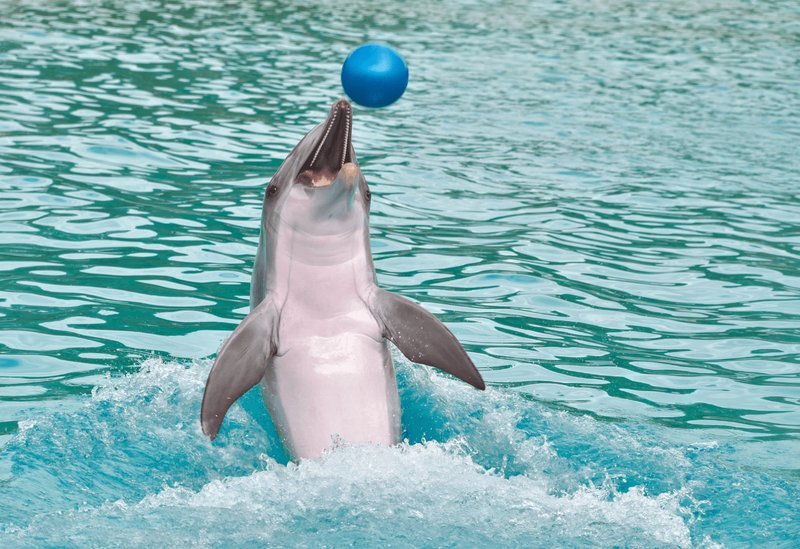
River dolphins, like the Amazon pink dolphin or the Ganges river dolphin, are not just beautifully unique but also exhibit complex behaviors that highlight their intelligence. They live in some of the world’s most challenging aquatic environments, so it’s no surprise that they’ve developed such sophisticated skills. Let’s explore what makes river dolphins remarkably smart and how their behaviors might surprise you.
Understanding Dolphin Intelligence
To appreciate how smart river dolphins are, it’s essential to understand what intelligence looks like in the animal kingdom. Dolphin intelligence isn’t just about having a big brain; it involves problem-solving, social interactions, and being able to learn from experiences—kind of like how we humans do. River dolphins possess large brains relative to their body size, which often correlates with higher cognitive abilities.
Research has shown that dolphins are capable of complex social behaviors. In groups, they communicate through a variety of clicks and whistles, which isn’t just playful chatter. It’s their way of sharing information, coordinating hunts, and even maintaining bonds within their pods. So, when you think about intelligence, it’s not only about individual thinking but also about how they interact and learn from each other.
Sensory Skills That Help River Dolphins Thrive
One of the standout features of river dolphins is their exceptional sensory abilities. Unlike their oceanic cousins, river dolphins often rely on echolocation because of the murky waters they inhabit. This is pretty impressive! Echolocation is like nature’s version of sonar, allowing them to send out sounds and listen for the echoes that bounce back from objects around them.
This skill helps them navigate through the dense riverine environments and track prey. Imagine being blindfolded in a dark room and still managing to move around without bumping into furniture! That’s essentially what river dolphins do. They can detect the size, shape, and even the movement of objects and animals in their surroundings just by the sounds they make.
Social Structures and Culture Among River Dolphins
River dolphins aren’t just independent creatures; they live in complex social structures. Pods of river dolphins can vary in size, from small family groups to larger communities. Within these groups, they exhibit unique behaviors that suggest a form of culture. For instance, they have been observed using tools, such as using river weeds to help catch fish.
Additionally, these dolphins can also engage in cooperative hunting strategies. They often work together to herd fish into tight groups, making it easier for everyone to eat. This kind of teamwork illustrates another level of intelligence, showing that they can plan and execute strategies as a group, which is a sign of higher cognitive abilities.
Communication: A Language of Their Own
When it comes to communication, river dolphins are quite the chatterboxes! Their vocalizations are not just random sounds; they form a complex system that seems to convey different meanings. They use a mix of clicks, whistles, and even body movements to share information with one another.
Researchers are still deciphering the full extent of their communication. Some studies suggest that they might even have specific calls for different situations or emotions—much like us saying, “I’m happy” versus “I’m scared.” This suggests they have a level of emotional intelligence and awareness that’s pretty remarkable in the animal kingdom.
Learning and Problem-Solving Skills
River dolphins are quick learners and show a capacity for problem-solving that’s quite admirable. In various observed scenarios, these dolphins have been seen figuring out how to access food in challenging situations. For example, they can manipulate objects and use their environment to gain an advantage, much like how we might strategize to reach something that’s just out of our grasp.
Moreover, their ability to learn from each other is compelling. Young dolphins often mimic the behavior of older, more experienced dolphins. This social learning enhances their survival skills, allowing them to adapt to their ever-changing environments more effectively.
Adapting to Environmental Challenges
One of the most impressive aspects of river dolphins is their ability to adapt. The rivers they inhabit are not always friendly. From changing water levels to pollution, these dolphins face many challenges. However, their intelligence shines through as they find ways to cope. For instance, during dry seasons when water levels drop, they may change their foraging habits or migrate to different areas.
This adaptive behavior shows not just intelligence but also resilience. River dolphins must constantly adjust to their surroundings, working with what they have rather than against it. It’s similar to how we navigate challenges in life—finding new ways around obstacles.
The Conservation Message
Despite all their intelligence and unique behaviors, river dolphins are under significant threat due to habitat loss, pollution, and human activities like fishing. Their plight serves as a reminder of how interconnected we all are and the importance of protecting these incredible creatures and their habitats. By understanding their cognitive abilities and behavior, we can appreciate the urgency of conservation efforts.
Just like any intelligent being, river dolphins deserve our respect and protection. The more we learn about them, the more we realize what valuable contributors they are to our planet’s biodiversity.
In conclusion, river dolphins are not just fascinating marine mammals; they are intelligent beings with rich cognitive abilities and complex social structures. Their ability to communicate, solve problems, and adapt to their environments underscores the depth of their intelligence. Remember, these amazing creatures deserve our admiration and protection, so let’s spread the word on how smart and special river dolphins truly are!

